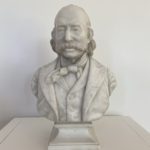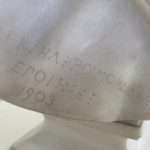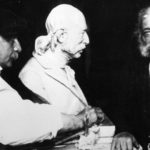Portrait Bust of Isaac Mayer Wise
Moses Jacob Ezekiel (Richmond, VA 1844–1917 Rome, Italy)
Carrara marble, 1903
Gift of Isaac Mayer Wise heirs
67.123
One of the most prominent Jewish leaders of the nineteenth century, Isaac Mayer Wise was instrumental in establishing the major ideas and institutions of Reform Judaism in America, including the Union of American Hebrew Congregations (today’s Union for Reform Judaism), Hebrew Union College, and the Central Conference of American Rabbis. After immigrating to American in 1846, he first served a congregation in Albany, New York before coming to Cincinnati in 1854 to become rabbi of B’nai Yeshurun (today’s Wise Temple), which he built into the largest and most prominent congregation of its time.
Ezekiel visited Cincinnati in 1899, twenty years after establishing his home and studio in Rome. He was commissioned by Congregation B’nai Yeshurun to make a bronze bust of Rabbi Wise in honor of his 80th birthday. That bronze now resides at the Skirball Cultural Center in Los Angeles. In 1903, three years after Wise’s death, his son-in-law Adolph Ochs, publisher of The New York Times, ordered a marble bust for his home, later given to Hebrew Union College by Wise’s heirs. In his Memoirs from the Baths of Diocletian, Ezekiel describes the sitting for the bronze: “Dr. Wise was living in the country [College Hill], so I had to get up every morning very early and ride an hour to reach his home. The accommodations for modeling were about as bad as they could be, and how I ever managed to do the work at all, considering that we were both sweltering in heat with the perspiration pouring off of us both, remains almost a mystery.” Ezekiel was probably acquainted with Wise’s writings, since his father served as secretary to the Board of Governors of Hebrew Union College. At the sitting, Wise and Ezekiel discussed theosophy, reincarnation, and Zionism—a subject on which they greatly differed, as Wise believed that America was the Jerusalem for the Jewish people, and Ezekiel believed that “the time would come when there would be a central government in Jerusalem again and that Palestine would flourish.”
The bust is likely the first three-dimensional portrait of a living rabbi by a Jewish artist.




